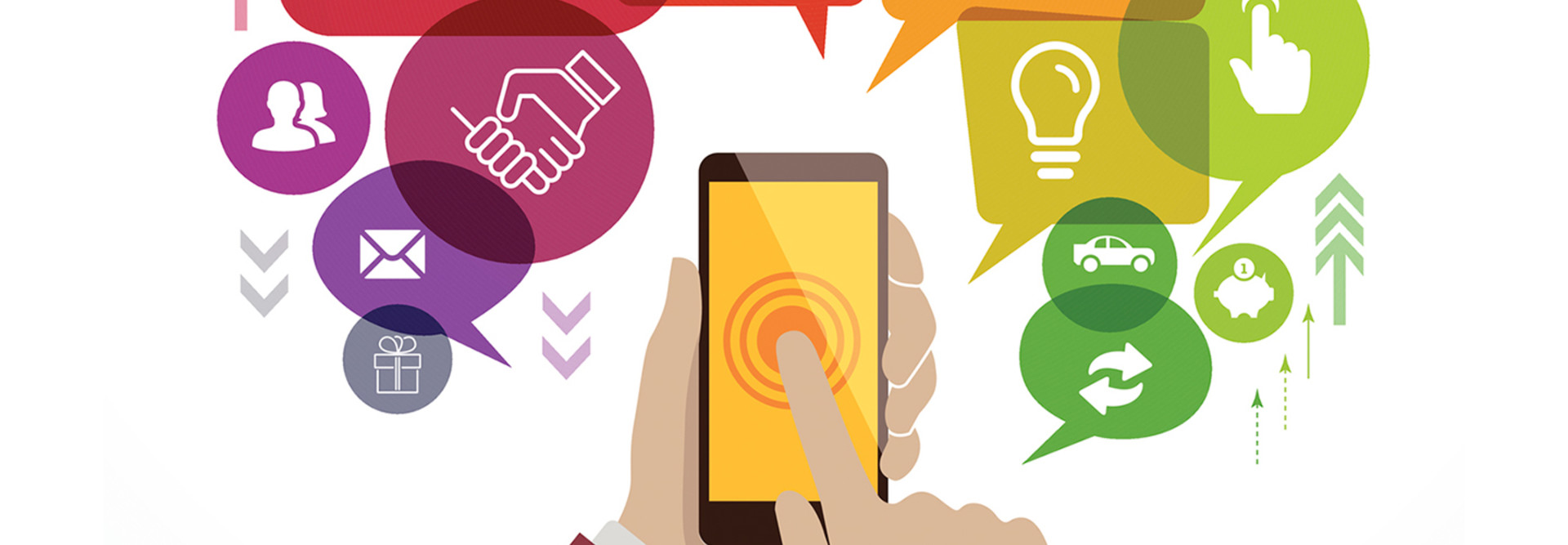Customer-Facing Applications Pave the Way for Enterprise Mobility
Eight years ago, the apps Super Monkey Ball and Bejeweled were all the rage with smartphone users of all ages. They were bestsellers among the 500 offerings available when Apple launched its App Store in July 2008.
But apps weren’t all fun and games. People used their new phones to read the latest headlines, calculate restaurant tips and shine flashlights in a pinch. Within a few days of the App Store’s opening, downloads climbed to 10 million. By June 2015, the App Store had stocked 1.5 million apps and reached 100 billion downloads.
Along the way, apps have evolved from forms of entertainment to relied-upon tools for work and life. Users have apps that wake them up, count their steps, report the day’s weather, maintain their calendars, shop for clothes, send bank transfers or deposit checks, and adjust their thermostats.
Users have become so dependent on their smartphones and tablets that it’s only natural for organizations to roll out apps to improve their interaction with customers and partners. Enterprises across a wide swath of industries have signed on to the mobile-first mantra and continue to find new ways to bring value to their clients and build stronger relationships with them. For example, airlines allow customers to use their apps to check in for flights, download mobile boarding passes or change seats. Sports teams send discounts on in-stadium food or merchandise to fans and alert them to entrances or restrooms with the shortest lines. Restaurants send alerts to customers when their tables are ready.
Engage Customers, Boost Revenue, Build Brand Loyalty
The average American checks his or her smartphone 46 times per day, according to a study from Deloitte — collectively, that’s 8.5 billion times that 185 million U.S. smartphone users look at their devices. Such numbers mean that organizations no longer need to rely on users finding them. Instead, apps provide millions of opportunities for organizations to interact with customers directly.
In addition to improving customer service and engagement, organizations also generate greater revenue through mobile apps. Retailers, for instance, may offer coupons to their customers, but apps also allow them to gather data from their customers’ shopping habits, helping them to later offer more targeted or specific discounts. An app user who shops for sneakers but does not finalize the transaction might receive a coupon for 20 percent off their next shoe purchase, for example.
Retailers also leverage beacons for proximity marketing, sending discounts via apps to customers as they enter malls. Beacons also allow retailers to send targeted discounts based on where customers have wandered within a specific store location.
Such customer-focused apps take brand loyalty to new levels, making it easy to track rewards and motivating users to become repeat customers. Apps also make it easier to shop: Customers can save their shipping and billing information and place orders quickly and easily from any location. They can also receive suggestions within product categories they’ve shopped before, increasing the chance that they’ll buy sooner rather than later. Some businesses, such as Starbucks, have developed apps that allow customers to preorder items so they’re ready ahead of time.
Improve Internally
Given the success of customer-facing apps, it’s only natural that businesses and other organizations would start to imagine how mobility might also improve their own internal operations.
Enterprise or employee-focused apps make sense in an age when workers may spend little time sitting at a desk. Armed with a smartphone or tablet, workers can visit clients, attend meetings, input data from site visits and work on projects from home, all while enjoying the same access to organizational resources as they would while working at the office.
In the past, when businesses adopted new technologies, they had to sell employees on their value and train them on how to use the technology properly. Because so many employees today already use mobile apps, they’re often comfortable adopting work-related apps with little or no training.
Those realities open the door to a wide assortment of apps that can re-create the tasks employees perform on the job or in the office. In many cases, workstaff who use those apps work far more efficiently. Employees who spend time in the field — utility workers, caseworkers, inspectors and police officers — use apps to produce reports, complete with photos and location coordinates, in real time. They’re no longer forced to take longhand notes that must be transcribed later. Those workers can also complete forms within apps, further saving time and reducing errors.
Apps can improve communication and collaboration among colleagues and their partners or clients. Employees can use apps to share files easily, update teams, send instant messages to colleagues and participate in video conference meetings. Organizations can use apps to manage assets. Trucking companies can keep track of their vehicle locations, use sensors to detect maintenance issues and adjust routes based on traffic conditions.
Enterprise-facing apps can increase productivity, simplify workflows and cut expenses, such as printing costs. Salespeople can access product or inventory information and finalize orders while visiting with customers. Inspectors can complete forms and collect signatures electronically. Business and organizational leaders can identify major operating challenges and have apps developed or customized to address them.
Keep Reading
Want to capitalize on the full power of mobility? Download the free white paper, "Mobile Applications: Seizing the Opportunity," to learn about the:
- differences between off-the-shelf and custom-built applications
- challenges in mobile app deployments
- real-world benefits of enterprise mobile apps
You'll also receive instant access to BizTech's entire library of free technology white papers by signing up just once.








